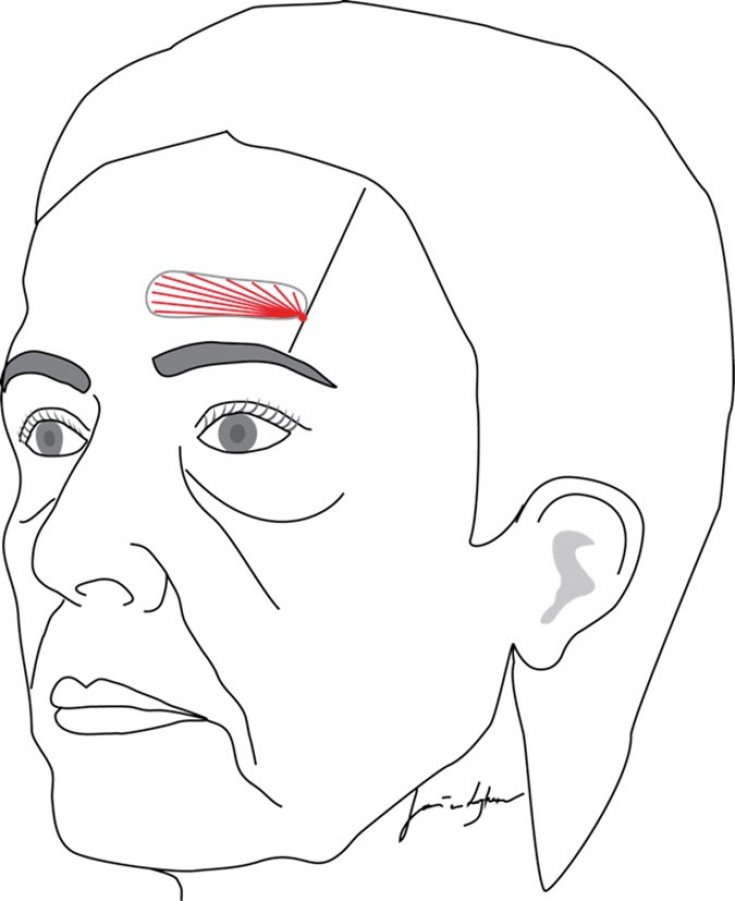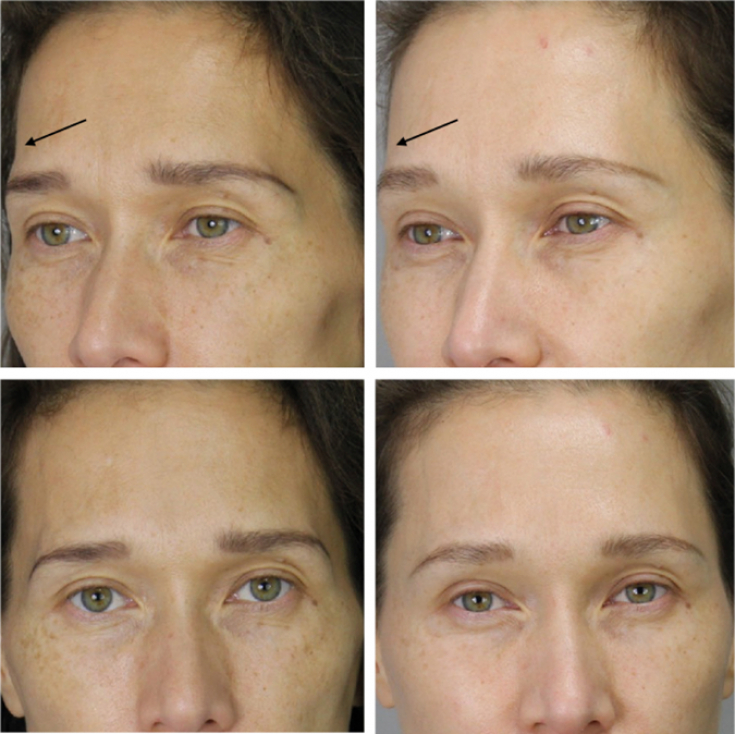Hairline regression, photodamage and skin laxity, dynamic wrinkles, fat loss and bone resorption – changes characteristic of the aging process of the forehead. As for other areas of the face, the most advantageous approach to rejuvenation in this case is a multi-level approach that involves working with all anatomical changes.
An individual correction plan is drawn up after assessing the condition of the forehead, as well as the periorbital and temporal zones adjacent to it. In this article, Dr. Jani Van Loghem talks about filling a forehead cavity with dermal fillers and demonstrates the results of the procedure.
Choice of preparation and instrument for filling the hollow on the forehead
The forehead dimple is presented as a depression that distorts the young contour of the forehead and changes the light reflection pattern. The recess is located almost parallel to the supraorbital margin, directly above the eyebrow.
The appearance of this aesthetic imperfection is believed to be primarily due to bone resorption, however, the loss of superficial fat and the frontalis muscle may also play a role in its formation.
Commercially available soft tissue fillers can be used to restore volume. The ideal depth of injection of such drugs – subaponeurotic and supraperiosteal layers. For correction, as a rule, a medium or high density filler with high viscoelasticity is used.
Detailed Forehead Wrinkle Correction Protocol
Ideal tool for procedure – a non-traumatic cannula that reduces the risk of drug injection into the supraorbital artery and its branches, and also provides greater accuracy of injection into the subgaleal layer than a needle.
For forehead dimple correction, a medium or high density filler with high viscoelasticity is usually used. The drug is administered by cannula.

Fig. Fig. 1: Scheme of filler injection to fill the depression on the forehead (black line indicates the medial border of the temporal crest; red dot – cannula entry point located 1–2 cm above the orbital ridge); red lines – lines of retrograde injection of the filler into the subgaleal space).
Forehead dimple correction with fillers: a step-by-step guide
Forehead cavity correction with fillers is carried out as follows:
1. Perform a supraorbital nerve block (optional).
2. Mark the forehead depression and the medial border of the temporal crest.
3. On this line, about 1–2 cm above the orbital ridge, mark the entry point.
4. If necessary, anesthetize this point before puncturing the skin with a needle.
5. Insert a cannula (e.g. 25 gauge, 50 mm) through the skin to the subcutaneous fat layer.
6. Pinch the skin in front of the cannula with the thumb and forefinger of your free hand and lift the muscle above the periosteum. With the help of such manipulations, a horizontal path of least resistance is created for the penetration of the cannula into the deep layers of tissues.
7. Introduce the cannula into the sub-neurotic space using the "twisting" technique; and at the same time lifting the muscle in front of the cannula.
8.
9. Inject the drug in a linear retrograde fan technique.
10. Perform a direct massage of the treated area to evenly distribute the gel in the tissues.
How to use fillers to hide what is "written on the forehead"

Fig. 2: patient before (left) and after (right) injection of 1ml hyaluronic acid filler (Belotero Intense) into the subaponeurotic space of the forehead cavity
After correction, temporary relaxation of the frontal muscle, swelling and dilation of the veins of the forehead may be observed.
After the procedure, the following temporary phenomena may be observed in the forehead area:
• relaxation of the frontal muscle (due to the action of lidocaine as part of the filler);
• expansion of veins (due to increased pressure);
• swelling.
According to The PMFA Journal






Add a comment